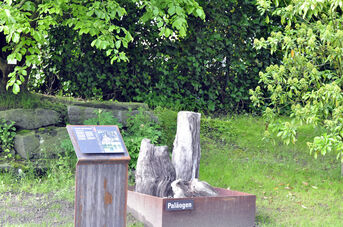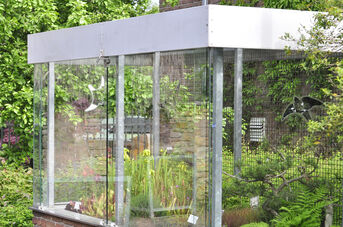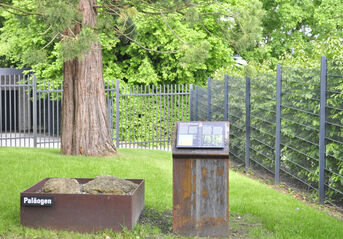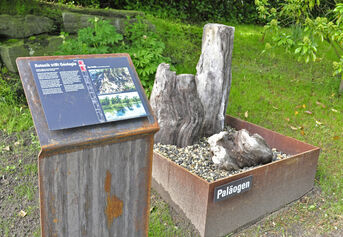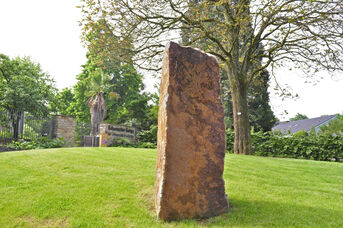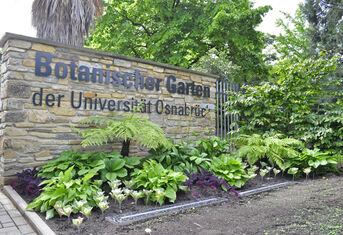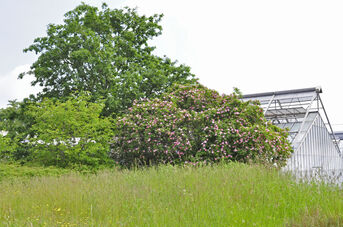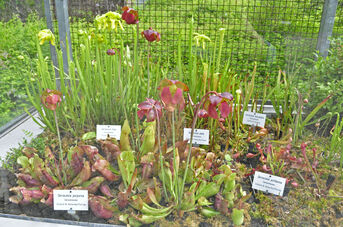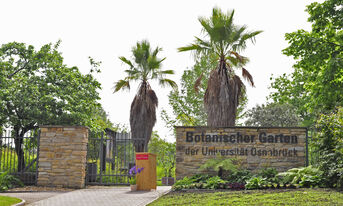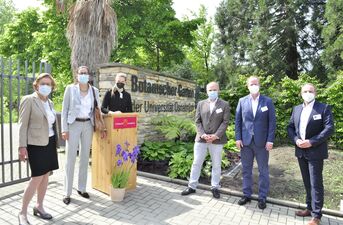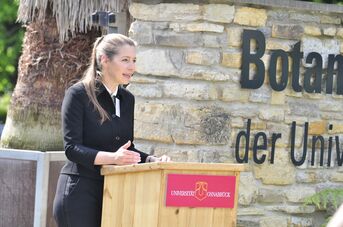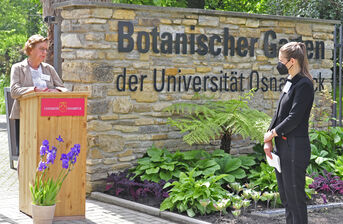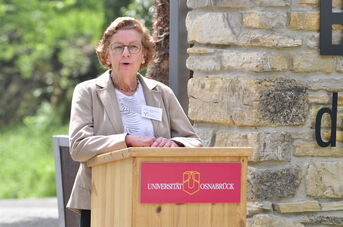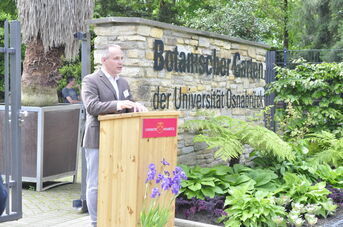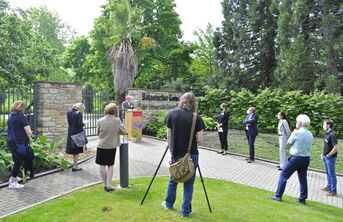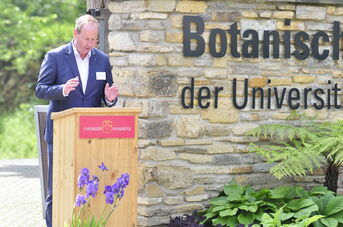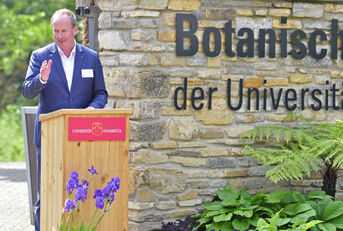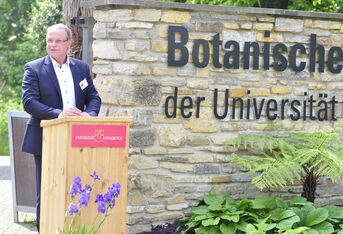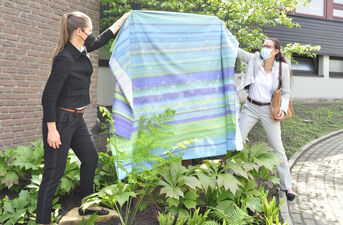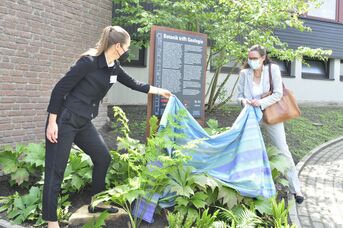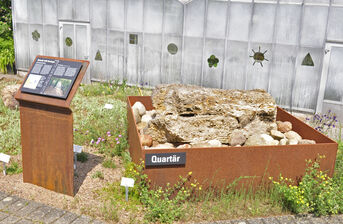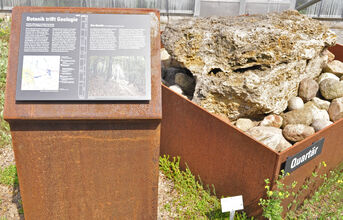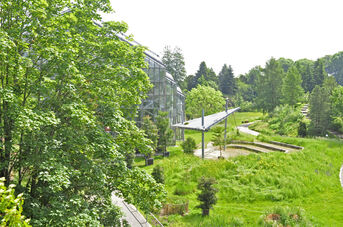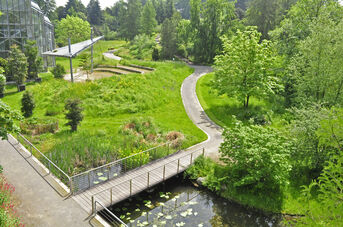Botany meets geology
Botanical Garden of the University of Osnabrück with newly designed entrance area and permanent exhibition.
The newly designed entrance area of the Botanical Garden of the University of Osnabrück was officially opened together with the exhibition "Botany meets Biology" on Friday, June 4, 2021, with the sponsoring foundations and a few invited guests.
Under the guiding principle "Botany meets Geology", the new entrance area on Albrechtstraße is the setting and starting point for a journey into the past of the Earth's history and the history of plant life on land. "Using various exhibits - rocks, living plants and plant fossils - from different geological formations, the development of land plants from the past 360 million years or so is made visible and tangible in the Botanic Garden," explains Prof. Dr. Sabine Zachgo, director of the Botanic Garden at Osnabrück University.
An exhibition on mosses in the foyer of the administration building shows the first important adaptation strategies that enabled these oldest land plants to permanently leave the protective environment of water more than 500 million years ago. A mural by artist Mareike Woltring illustrates the key steps in current biodiversity research topics, the adaptation of plant life from water to land.
The redesign of the entrance area and the permanent exhibition "Botany Meets Geology" were funded by the Sparkasse Osnabrück Foundation, the Georgsmarienhütte Steelworks Foundation, the Friends of the Botanic Garden, the University of Osnabrück and the Friedel & Gisela Bohnenkamp Foundation with approximately 144,000 euros. The design is based on a plan by Osnabrück architect Martin Rohling in cooperation with the building management and the university's botanical garden.
The concept "Botany meets Geology" was developed and implemented in stages by Custodian Dr. Nikolai Friesen, together with Ulrich Rösemann and Yvonne Bouillon (Technical Management) and the Friends of the Botanic Garden. Expert support came from geologist Fabian Müller (Terra Vita). The Green School, under the direction of Claudia Grabowski-Hüsing, will in future offer a wide range of educational programs on this topic for different target groups.
The special feature of the Osnabrück Botanical Garden is its location in the middle of two former quarries. They are thus both a backdrop and part of the history. The meter-high steep walls and quarries of limestone were formed by the drying up of a sea around 235 million years ago during the Lower Muschelkalk of the Triassic period.
"The concept of linking botany and regional geology is so far unique and invites visitors to follow the trail of the stones and learn more about the fascination of the plant world and the expression of its enormous diversity," explains director Prof. Zachgo, who as a plant geneticist studies the adaptation mechanisms of plants to changing environmental conditions.
(Photos/text: Copyright Uni Osnabrück/Elena Scholz)
